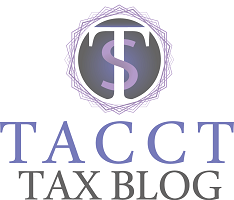
How do Tax Extensions Work?
Filing for an automatic 6 month extension to file your taxes is easy. Simply fill out Tax Form 4868, Application for Automatic Extension of Time To File U.S. Income Tax Return (pdf) by the tax filing deadline. The tax deadline is usually every April 15, but the actual date can vary if that date falls on a weekend or holiday. You then have until October 15th to file your taxes with the IRS.
If you missed the deadline to file for an extension, get it in ASAP, which will minimize IRS penalties and interest owed. These penalties and fees can be substantial!
It is important to note that even if you file an extension, your taxes are due April 15th, whether or not your tax forms have been completed and filed. If you filed an automatic tax extension form, it is best to include any estimated taxes owed to avoid penalties and interest.
After You File Your Tax Extension
Now comes the fun part – get your taxes done. The sooner you get them done the better, because if you owe more in taxes than you paid, you may owe late payment penalties. Having a deadline hanging over your head can also cause a lot of unnecessary stress.
Late Payment and Underpayment Penalties
By the end of the tax year, if you did not have enough tax withheld from your wages or you did not pay enough estimated taxes, your outstanding balance will be due by April 15th. The IRS expects all individuals and businesses to file their returns and pay their taxes by the proper deadline, or penalties will be charged. Late payment penalties accumulate over time and increase the longer the taxes remain unpaid.
Underpayment penalties apply to those who don’t have enough tax withheld from their wages or don’t make enough estimated tax payments throughout the year. At the end of the year, if at least 90% of the total taxes owed are not paid (or 100% of the taxes that were owed for the previous year), an underpayment penalty may be charged on the unpaid amount. However, this penalty does not apply if the person owes less than $1,000 after the withholding or estimated tax payments are applied.
The late payment penalty for taxes that aren’t paid by the April 15th deadline starts at .05% of the unpaid taxes, beginning the day after the taxes are due. This penalty increases by .05% every month the taxes go unpaid, and can grow up to 25% of the overdue amount.
Late Filing Penalties
The highest penalty the IRS imposes is for failing to file your tax return on time when you owe taxes. The fee for filing a late return starts at 5% of your unpaid taxes per month. If you have not filed in 60 days after the original due date, you will be charged a minimum penalty of $135 or 100% of your owed taxes, whichever is smaller.
The good news is that there’s no reason for anyone to incur the late filing penalty. As long as you file a tax extension by the April 15th due date, you can automatically get 6 more months to file your tax return. You will still accumulate payment penalties and interest on any unpaid tax, but you will avoid the filing penalty (as long as you file your return by the extended deadline, October 15th).
If you owe taxes, it is highly recommended that you file your tax return or a tax extension by the original deadline, even if you cannot fully pay your taxes on time. This will help you avoid the late filing penalty and reduce the total amount of penalties you will owe to the IRS.



